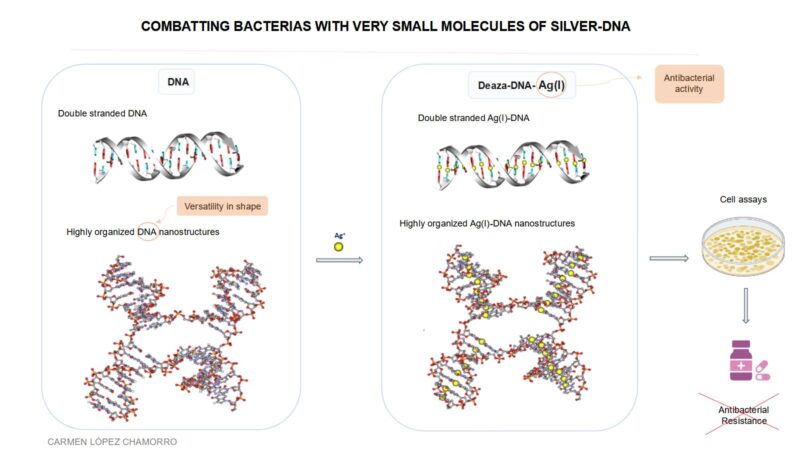
One of the greatest challenges in pharmaceuticals research today is the increase in antibiotic resistance, i.e. the ability of microorganisms to survive in the presence of antibiotics.
This Master’s thesis focuses on developing new drugs with innovative mechanisms using AgI (silver) ions, which can potentially prevent the growth of bacteria (antibacterial activity) and fungi (antifungal activity). DNA molecules (with a double-stranded structure) are used to transport these ions thanks to their high selectivity and versatility in terms of size, shape and sequence. To do this, chemical molecules (nucleobases) that are part of DNA (called guanine and adenine) are replaced by similar molecules (7-deazaguanine and 7-deazaadenine). These deaza-DNA molecules can transport the AgI ions inside the double-stranded DNA. In this way, customized deaza-DNA structures can be formed with base pairs mediated by AgI that can be studied by cell assays. Using this method, we can endow DNA molecules with new antibacterial properties present in the AgI without modifying their geometry. This provides a new way of studying drugs that can help avoid antibacterial resistance.
Keywords: DNA; deaza-DNA; AgI ions; nanostructures.
Directed by: Miguel Ángel Galindo Cuesta

Leave a Reply